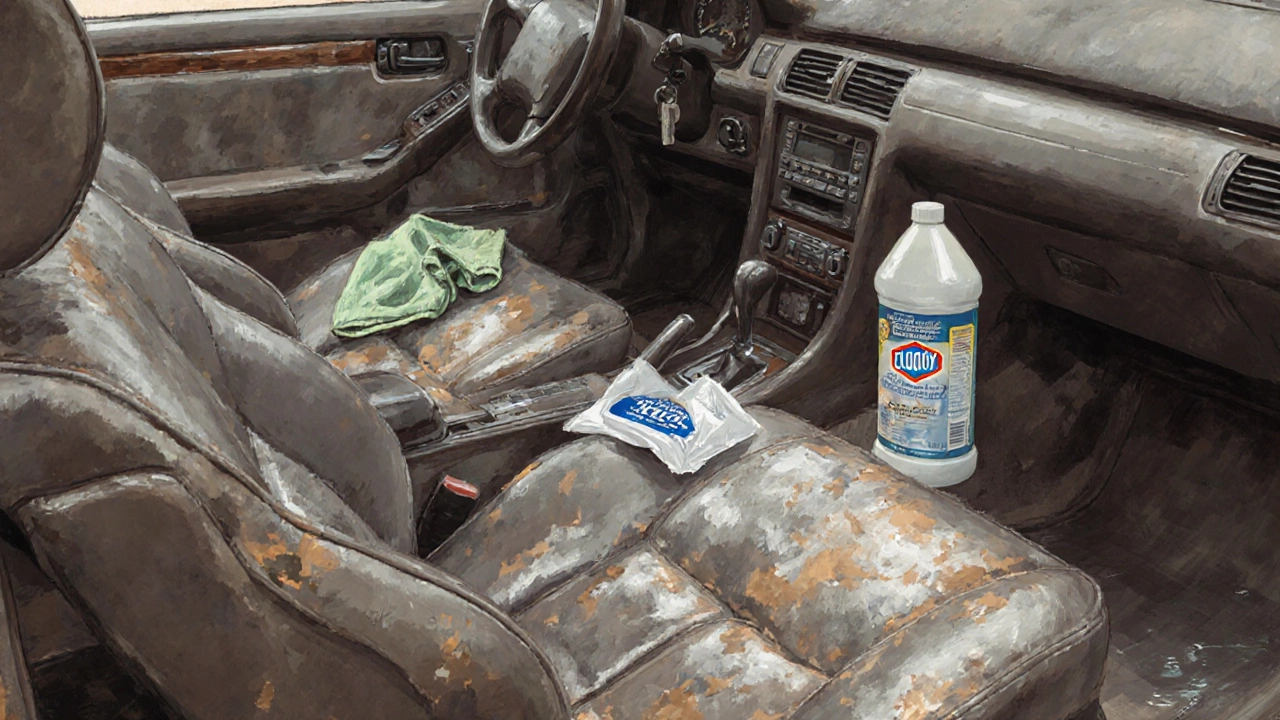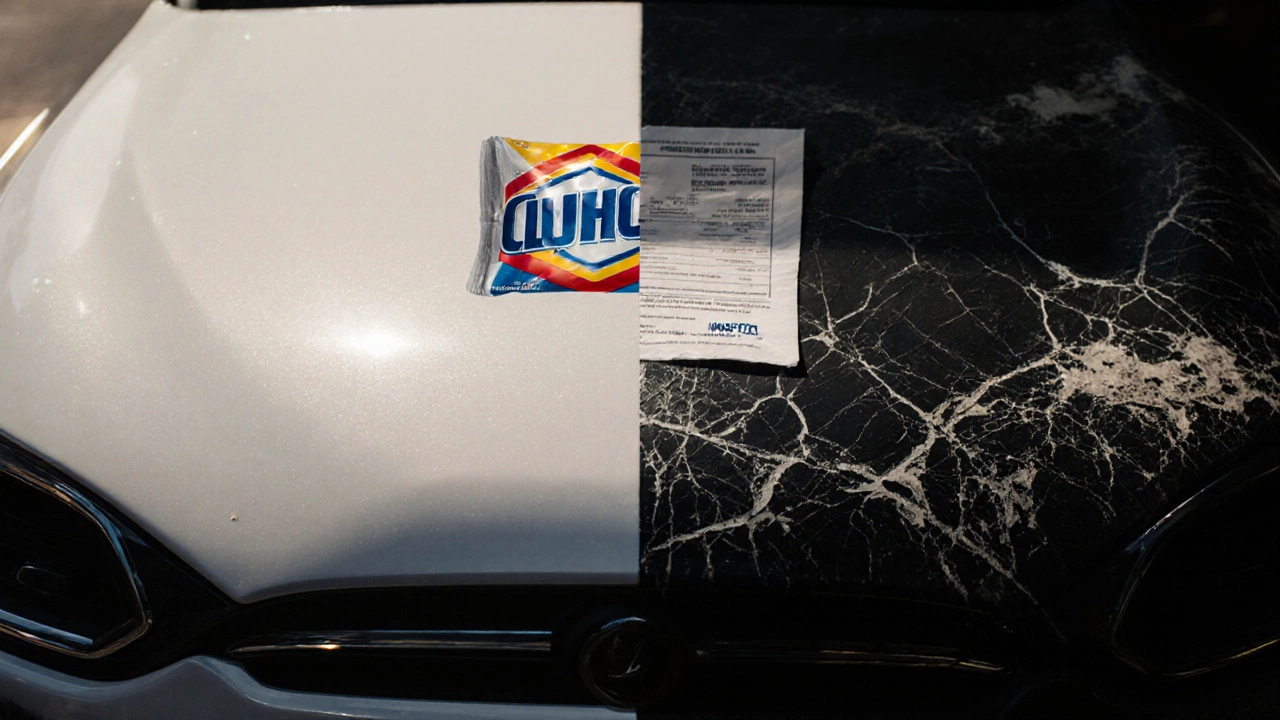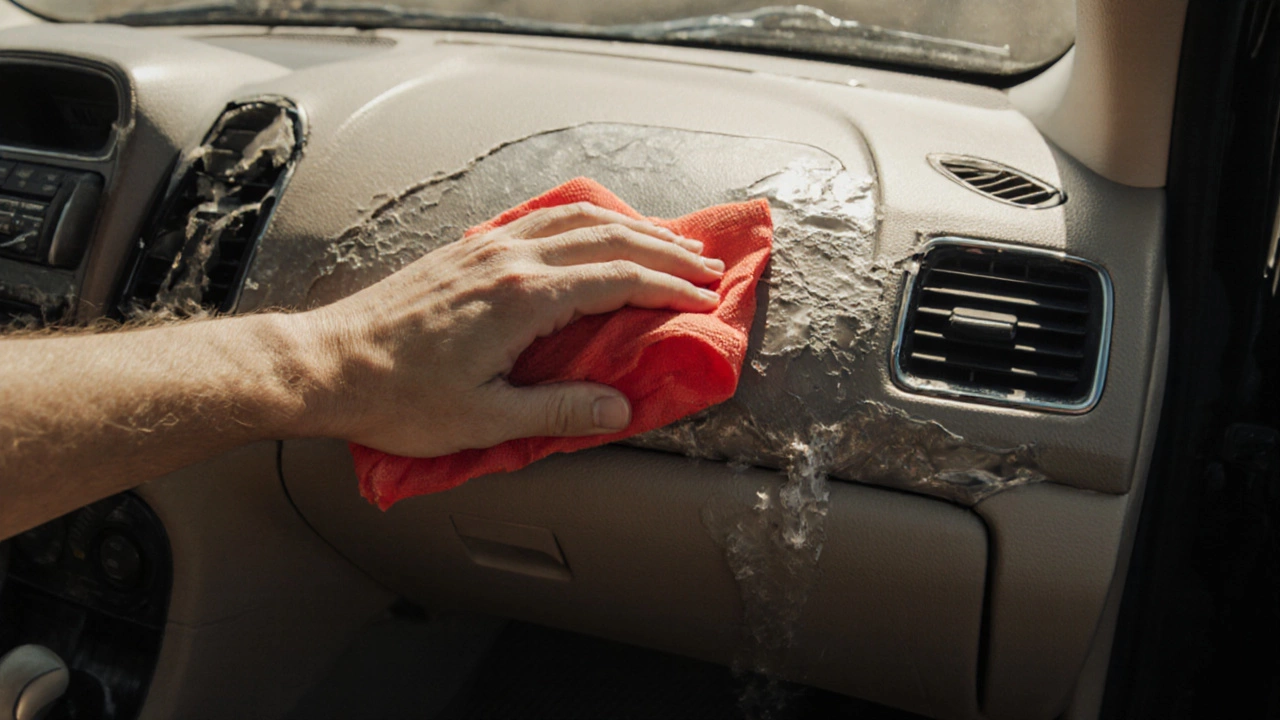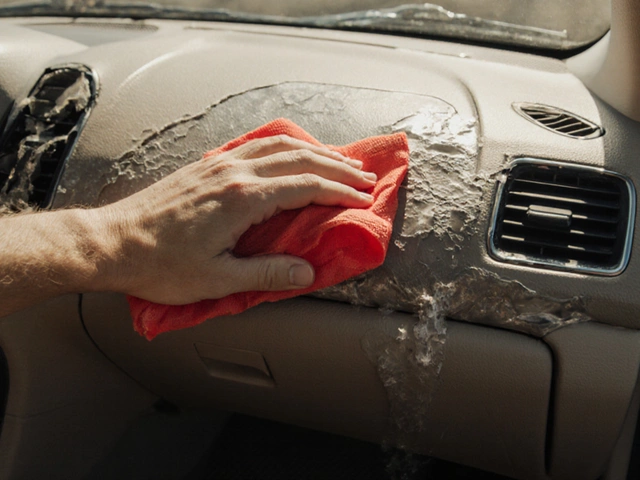Car Surface Safety Checker
Check if Clorox wipes are safe for your car's interior. Based on the article: Clorox wipes contain bleach and alcohol that damage car surfaces over time.
You grab a Clorox wipe after a long drive, ready to wipe down your sticky console or smudged dashboard. It feels quick, easy, and clean. But is it safe for your car’s interior? The short answer: sometimes, but with big risks. Many people use Clorox wipes on car surfaces without thinking twice-until they notice cracked leather, faded plastic, or a weird sticky residue that won’t wipe off.
What’s Actually in Clorox Wipes?
Clorox wipes contain bleach-based disinfectants, primarily sodium hypochlorite, along with surfactants, fragrances, and alcohol. They’re designed for hard, non-porous surfaces like kitchen counters and bathroom tiles-not the soft plastics, vinyl, leather, or fabric found in your car’s cabin.
That bleach component is the problem. Over time, it breaks down the protective coatings on dashboards, door panels, and center consoles. You might not see damage right away, but after a few months of weekly wipes, you’ll notice the plastic turning brittle, cracking near the air vents, or losing its glossy finish. Leather seats? Even worse. Bleach strips natural oils, causing dryness, discoloration, and eventually, tears.
What Surfaces Are Safe?
Not all car surfaces react the same. If you’re desperate to disinfect, here’s what you can safely wipe down with Clorox wipes-only if you dry it immediately afterward:
- Non-porous plastic trim (like radio buttons or gear shift knobs)
- Glass surfaces (windows, mirrors)
- Stainless steel or chrome accents (door handles, cup holders)
These surfaces don’t absorb chemicals the way leather or vinyl does. But even here, you’re taking a risk. The alcohol in the wipes can leave a hazy film on touchscreens or glossy plastics, making them harder to read in sunlight.
What Surfaces Should You Avoid?
Never use Clorox wipes on these:
- Leather seats and steering wheels
- Alcantara or microfiber upholstery
- Matte or textured plastic (common on modern dashboards)
- Touchscreens and instrument clusters
- Fabric carpets and floor mats
Leather seats are especially vulnerable. A 2023 study by the International Automotive Care Association found that 68% of leather damage cases traced back to improper cleaning agents-including disinfecting wipes. The damage isn’t always visible right away. It builds up slowly, like sun damage on skin. By the time you see cracks, the material’s integrity is already compromised.
Matte finishes are another silent killer. Many newer cars use a soft-touch, non-reflective coating on dashboards and consoles. Clorox wipes dissolve this coating, turning it shiny and uneven. Once that’s gone, you can’t restore it without professional re-coating-which costs hundreds of dollars.

What Should You Use Instead?
You don’t need bleach to keep your car clean. Here’s what works better-and is actually designed for cars:
- Microfiber cloths + water: For daily dusting, this is all you need.
- Interior-specific cleaners: Brands like Chemical Guys, Meguiar’s, and 303 Protectant are formulated for automotive plastics, leather, and vinyl. They clean without stripping oils.
- Leather conditioner: Use it every 2-3 months to keep seats soft and prevent cracking. Don’t just clean-protect.
- UV-protectant sprays: These help prevent fading from sunlight, which is the real enemy of car interiors.
For disinfecting, look for alcohol-free, pH-neutral disinfectant sprays labeled for automotive use. Some, like Lysol’s Automotive Disinfectant Spray, are safe on leather and plastics. Always test in a hidden spot first.
Real-Life Example: A Melbourne Driver’s Mistake
Last winter, a local Toyota Corolla owner in Melbourne wiped down her dashboard weekly with Clorox wipes to fight germs during flu season. After six months, the once-smooth plastic around her steering wheel had turned dull and started flaking. She brought it to a detailer, who told her the damage was irreversible. Replacing the entire dashboard panel cost her $1,200.
She didn’t know the wipes were acidic. She thought she was being hygienic. Turns out, she was paying for cleanliness with expensive repairs.
Quick Rule of Thumb
If you’re unsure whether something is safe for your car interior, ask yourself: Would I use this on my phone screen or laptop keyboard? If the answer is no, don’t use it in your car either. Your car’s interior is full of sensitive materials that aren’t meant for harsh chemicals.
Keep a small bottle of water-based cleaner and a microfiber cloth in your glovebox. Use it after every trip. It’s faster than you think, and it won’t cost you thousands down the line.

Myth Busting: "It’s Just a Wipe-How Bad Can It Be?"
People say, "I’ve been using Clorox wipes for years and nothing happened." That’s true-for now. But damage from chemical exposure is cumulative. It doesn’t show up in a week. It shows up in a year. By then, your dashboard is cracked, your leather is stiff, and your touchscreen is streaky.
Think of it like sunscreen. You don’t see sunburn after one day at the beach. But over years, the damage adds up. Same with cleaning products. One wipe won’t kill your dashboard. But 50 wipes over 6 months? That’s a different story.
When Is It Okay to Use Them?
There’s one exception: emergency disinfection. If someone was sick in your car, or you spilled something biohazardous (vomit, blood), then yes-use Clorox wipes to disinfect hard, non-porous surfaces. But wipe them down again with a damp microfiber cloth afterward to remove residue. Then, apply a protectant to prevent long-term damage.
For everyday cleaning? Stick to products made for cars. They’re cheap, safe, and designed to last.
Final Takeaway
Clorox wipes are not car cleaning tools. They’re household disinfectants. Using them in your car is like using steel wool to clean a non-stick pan-it might seem to work at first, but you’re ruining the surface over time.
Your car’s interior is expensive to replace. It’s also the space you spend hours in every day. Don’t risk it for convenience. Keep a proper interior cleaner in your car. Use it regularly. Your dashboard, seats, and wallet will thank you.


